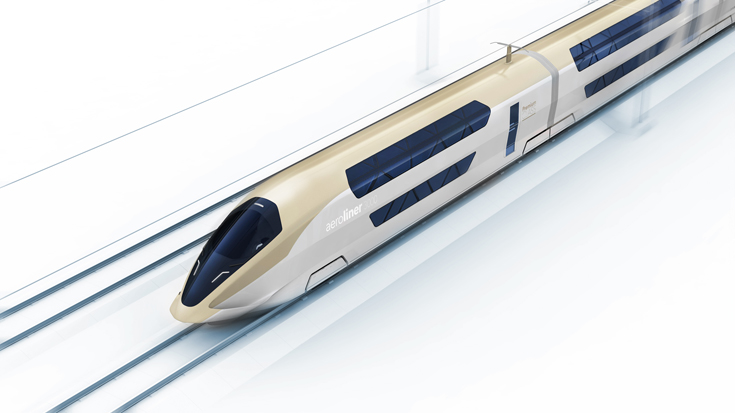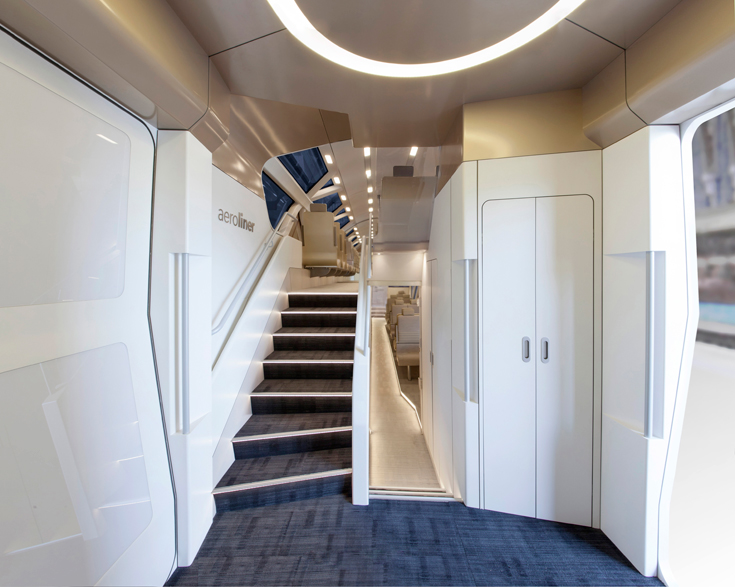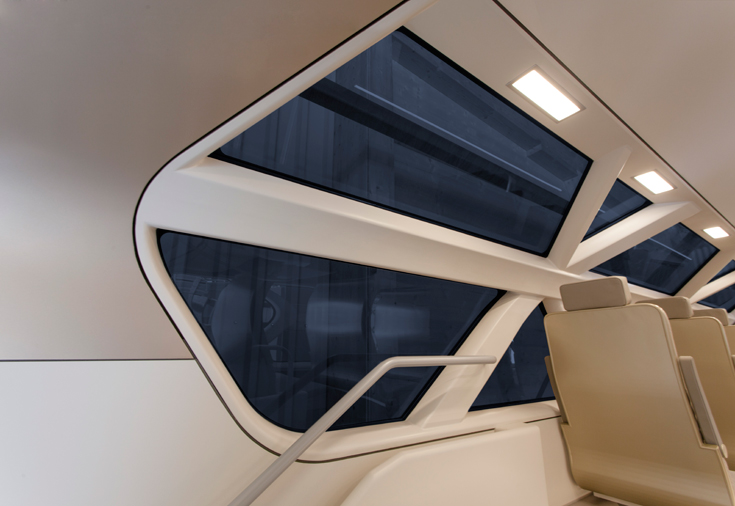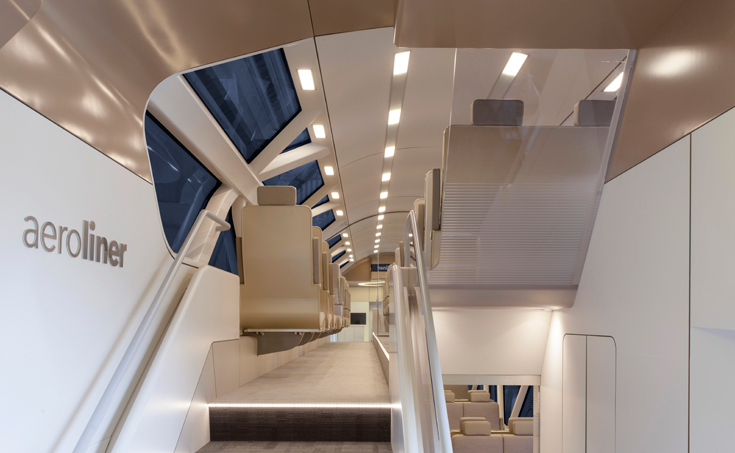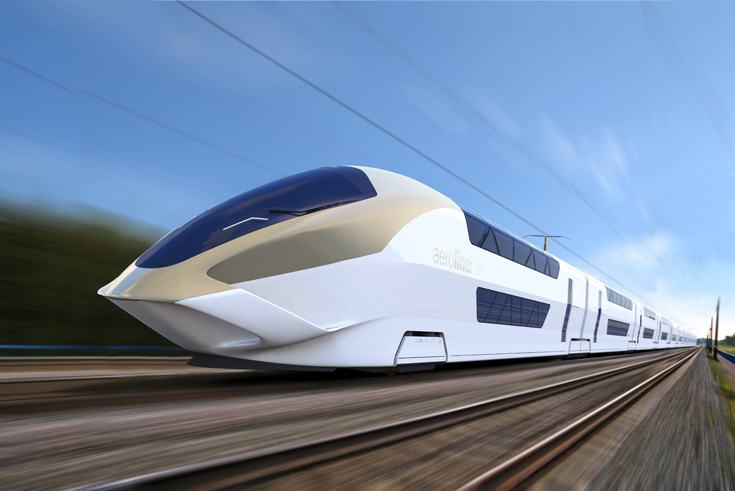Spaceship on rails – The future of train travel

Picture: Andreas Vogler Studio
The double-decker train has been designed by the architecture and design practice Andreas Vogler Studio in collaboration with the German Aerospace Center (DLR). The unique combination involved of forward-looking design, innovative lightweight construction, interactive control systems and revolutionary engineering reasoning has brought about the AeroLiner3000 as a result.
Aerospace thinking as a guiding principle
»Lightweight construction has top priority in aviation«, say Andreas Vogler, a Swiss architect living in Munich. »With the AeroLiner3000 we are showing that the lightweight approach can trigger a profound change in the world of rolling stock.«
Engineering and technical design methods used in aviation have been applied to the concept and design of the new train, yielding such impressive results as more seating, less weight and greater efficiency. The design also achieves a significant reduction in operating and maintenance costs as well as carbon dioxide emissions – all criteria consciously aimed for as the most important project specifications concerned the Brits' »4C« objectives: costs, capacity, carbon footprint and comfort.
The studio has been working successfully with architects and industrial designers in the aerospace field for years. In the case of the AeroLiner3000, Andreas Vogler additionally joined forces with the German Aerospace Center to benefit from the insights and findings of its Next Generation Train project. This brought about an accomplished combination of competencies.
Fundamental rethinking – a bilevel train despite tight design constraints
The AeroLiner3000 has a double-decker design, a premiere in Great Britain, where very small clearance gauges (70 centimeters smaller than on the Continent) have made such a solution inconceivable so far. The main technical innovation is seen in the novel lightweight construction of the carriage bodies. This permits greater flexibility in the design of the interiors, thus enabling the AeroLiner300 to provide a 30 percent increase in seating. See this video for more information on the train.
Aerospace thinking as a guiding principle
»Lightweight construction has top priority in aviation«, say Andreas Vogler, a Swiss architect living in Munich. »With the AeroLiner3000 we are showing that the lightweight approach can trigger a profound change in the world of rolling stock.«
Engineering and technical design methods used in aviation have been applied to the concept and design of the new train, yielding such impressive results as more seating, less weight and greater efficiency. The design also achieves a significant reduction in operating and maintenance costs as well as carbon dioxide emissions – all criteria consciously aimed for as the most important project specifications concerned the Brits' »4C« objectives: costs, capacity, carbon footprint and comfort.
The studio has been working successfully with architects and industrial designers in the aerospace field for years. In the case of the AeroLiner3000, Andreas Vogler additionally joined forces with the German Aerospace Center to benefit from the insights and findings of its Next Generation Train project. This brought about an accomplished combination of competencies.
Fundamental rethinking – a bilevel train despite tight design constraints
The AeroLiner3000 has a double-decker design, a premiere in Great Britain, where very small clearance gauges (70 centimeters smaller than on the Continent) have made such a solution inconceivable so far. The main technical innovation is seen in the novel lightweight construction of the carriage bodies. This permits greater flexibility in the design of the interiors, thus enabling the AeroLiner300 to provide a 30 percent increase in seating. See this video for more information on the train.
